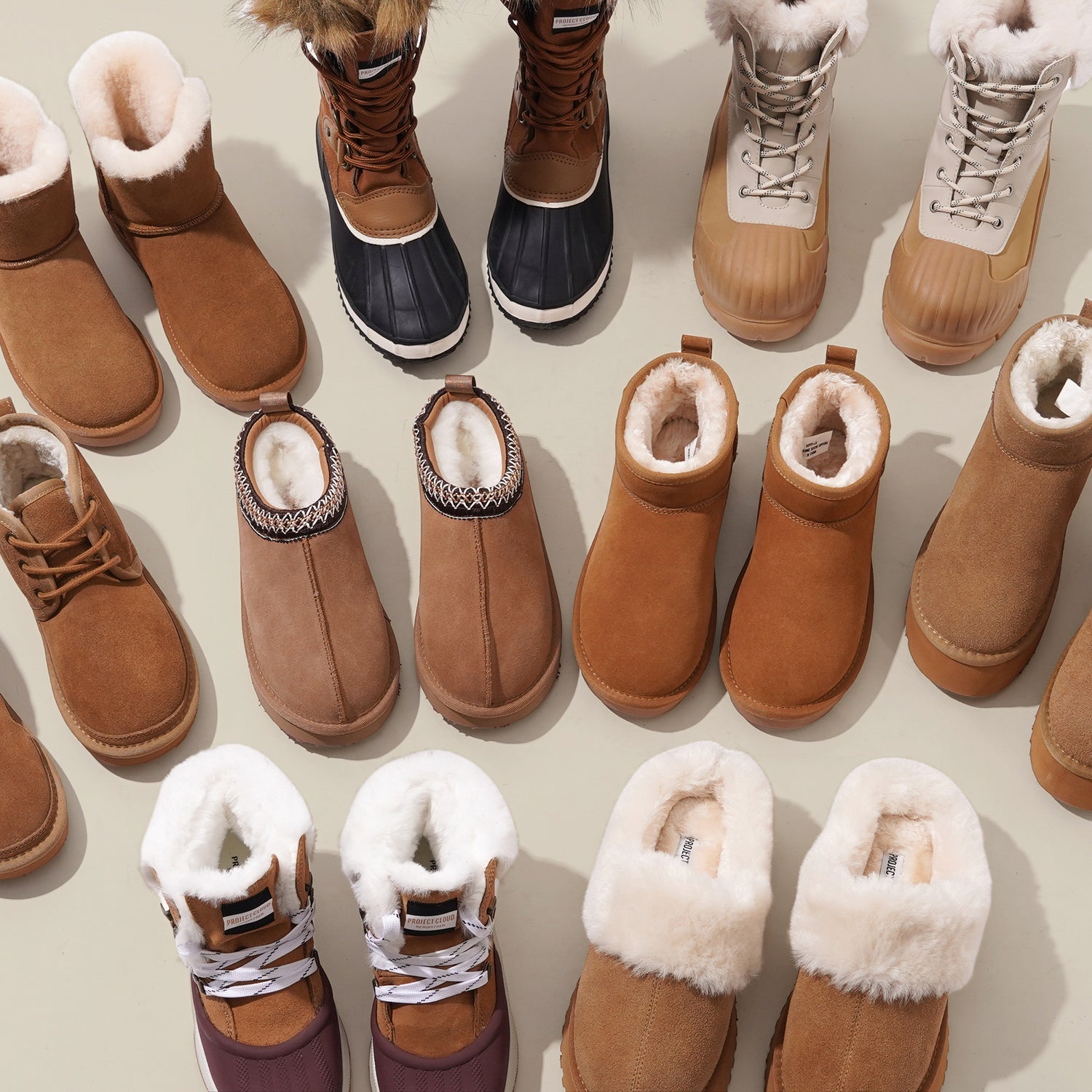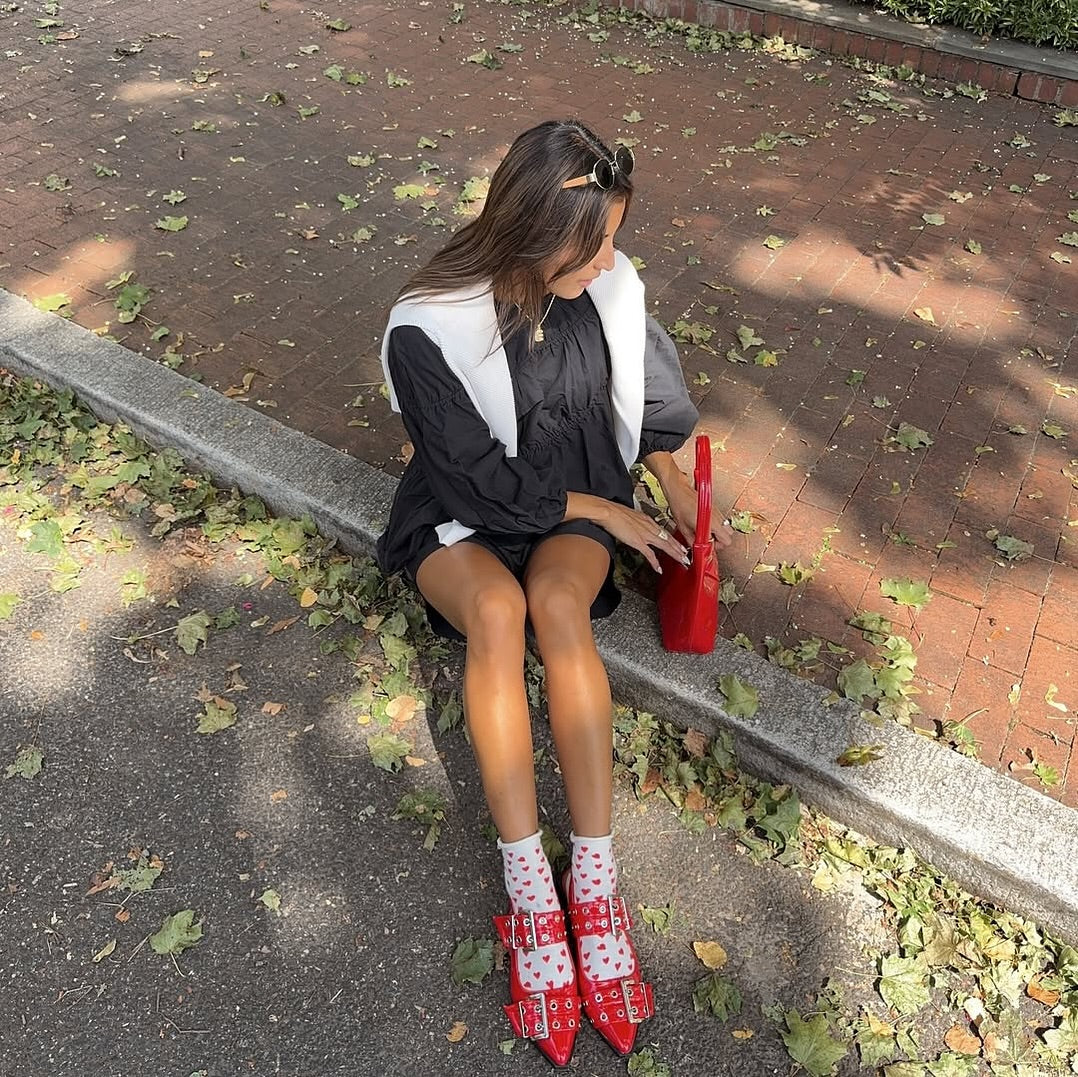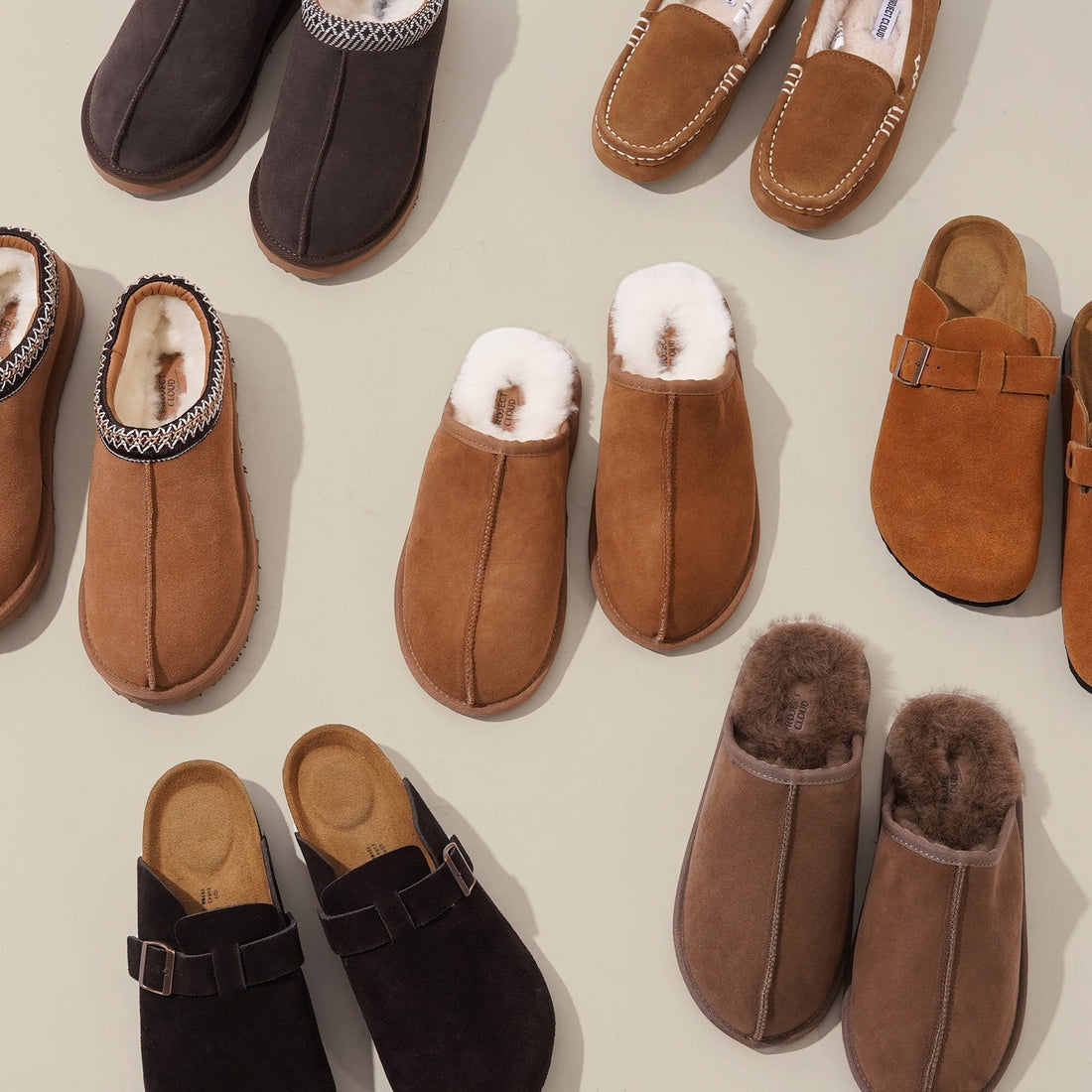
How to Keep Your Feet Warm and Dry in Winter
A winter beauty of frost and snow, but cold, wet feet take away the magic faster than anything else. Keep your feet nice and dry while you walk to work, go for a walk in the morning, or play in the snow with your family. It will determine how much you enjoy the season.
The Science of Cold Feet in Winter
Why Your Feet Get Cold
During the winter, cold feet are caused by a number of things that make you feel uncomfortable. In order to keep your core body warm, blood vessels in your limbs narrow when the temperature drops. Your feet are more likely to feel numbness and pain because of this natural reaction.
There are 250,000 sweat glands on your feet, which make wetness even when it's freezing outside. When this internal dampness is mixed with the outside wetness from snow and slush, it makes for cold, sore feet.
The Moisture-Cold Connection
Moisture makes the problem a lot worse. Wet feet lose heat 25 times faster than dry ones. This is a terrible circle because being wet makes you cold, which makes you more likely to get frostbite and other injuries related to the cold.
You can take specific action against these mechanisms if you understand how they work. To break this loop, you need a complete plan that deals with both controlling temperature and managing moisture from different points of view.
Your Winter Foot Protection System
The Foundation: Winter Socks
Your choice of socks has a big impact on how comfortable your feet are in the winter. The material is very important. In every winter situation, wool and synthetic mixes work better than cotton.
When it comes to winter socks, merino wool is the best. Temperature regulation, moisture-wicking, and odor resistance are some of its natural qualities. Wool keeps about 80% of its insulating powers even when it's wet. Polyester and nylon are examples of synthetic materials that are very durable and dry quickly. These materials are used together in a lot of modern winter socks to make the best performance blends that keep your feet warm while keeping the bulk to a minimum.
Even though cotton socks are nice in the summer, they are your worst enemy in the winter. Cotton soaks up sweat and presses it against your skin, making you feel hotter and more uncomfortable. When cotton gets wet, it loses almost all of its ability to keep you warm.
Smart Sock Layering Strategies
Consider sock thickness carefully. While thicker socks provide more insulation, they can restrict circulation if your shoes fit too tightly. This restriction counteracts any warmth benefits and may leave your feet colder than before.
Layering socks works wonderfully when done correctly. Start with a thin moisture-wicking liner sock, then add a thicker insulating sock over it. This system creates air pockets that enhance insulation while the liner moves moisture away from your skin. However, ensure your footwear accommodates the extra bulk without becoming restrictive. The solution lies in finding the right balance—medium-weight socks often provide adequate warmth without compromising circulation.
Winter Footwear Selection
Your main defense against the weather in the winter is your boots. The right boots protect you from all angles by insulating, protecting, and providing grip.
Insulation ratings help you choose boots that are right for your tasks and the weather. The light insulation (200g) is good for busy activities or mild winters. Medium insulation (400–600g) is good for everyday use in cool to cold weather. Heavy insulation (800g or more) keeps you warmest in very cold conditions or when you're doing something stationary. Keep in mind that the amount of exercise you do affects how warm you need to be. For example, hiking makes you warmer, but standing at a bus stop doesn't.
Proper Fit and Support Features
A good fit makes sure that you are comfortable and warm. Your winter boots should be big enough to fit thick socks without being too tight. Leave about the width of your thumb between the front of the boot and your longest toe. This place makes an air layer that keeps your feet warm while still letting them move naturally.
Shoes with heel support keep your feet in the right place, so your feet and legs don't get tired after long winter walks. When you wear comfortable walking shoes, you move around more during the day, which naturally improves circulation. You're more likely to stay busy when your feet are supported and cushioned. This creates a cycle of warmth and comfort.
Comprehensive Moisture Management
External Moisture Defense
Waterproofing technology has come a long way. Modern membranes keep water out while letting moisture vapor escape, which keeps the air dry in both ways. Choose boots with sealed seams and gusseted feet that keep water out of places it could get in. In deep snow and puddles, bigger boots are better.
External moisture requires proactive prevention:
- Apply waterproofing treatments to your boots on a regular basis, as directed by the manufacturer.
- Use gaiters to close the gap between boots and pants in deep snow.
- Take off your wet shoes as soon as you get inside.
- Carry extra socks for long outings.
Internal Perspiration Control
The moisture inside from sweating also needs to be taken care of. No matter what the temperature is, your feet automatically make moisture all day long. Taking care of this wetness keeps it from building up, which can cause cold feet.
Materials in moisture-wicking socks take sweat away from your skin, but they need a way to get that sweat to another place. Membranes in boots that let water vapor escape but not liquid water in let water vapor escape.
Foot powders soak up extra wetness and make walking easier. Put them on before putting on socks, paying special attention to sweaty areas. Some powders have antifungal qualities that make them even better for winter, when your feet spend a lot of time in warm, closed-in boots.
Traction and Safety Considerations
Winter Surface Navigation
Traction becomes critical on icy surfaces. Non slip shoes feature specialized rubber compounds and tread patterns designed for winter conditions. Deep lugs provide grip in snow, while micro-siping (tiny cuts in the sole) enhances traction on ice.
Some boots include built-in ice cleats or compatibility with removable traction devices. These features prove invaluable during ice storms or when navigating particularly treacherous surfaces. Consider keeping removable ice grips in your car or bag for unexpected icy conditions.
For more comprehensive guidance on selecting footwear with optimal slip resistance for various winter conditions, our detailed guide on choosing safe and comfortable slip-resistant shoes provides valuable insights on traction technologies and safety features that work best on icy surfaces.
Natural Warmth Through Better Circulation
Blood Flow Enhancement Techniques
Your body's circulation system acts as a natural heating network. Enhancing circulation improves foot warmth more effectively than adding layers.
Physical movement pumps blood to your extremities. Simple exercises work wonders:
- Move your toes up and down and curl them while sitting
- Rise up on your toes then lower back down when standing
- Take short walks every hour if you sit most of the day
- Flex and point your feet before sleeping to warm them up
These actions only take seconds, but they have a big effect on comfort. Regularity is more important than intensity, so set notes if you need to.
Core Temperature Maintenance
The core body temperature has a direct effect on how warm the extremities are. The blood flow to your fingers and toes is better when your chest stays warm. Put on layers, starting with base layers that wick away sweat. Put insulating layers in the middle and waterproof shells on the outside. This method keeps warm air in while letting moisture out.
When you buy shoes, make sure they fit your foot type and let you walk naturally. Moving around warms you up and gets more blood to your limbs.
Essential Home Care Practices
Evening Foot Care Rituals
How your feet deal with cold depends a lot on what you do at home. Foot care at night gets them ready for the challenges of the next day.
Warm foot soaks help blood flow and relax muscles. Adding Epsom salts will help reduce swelling and ease the pain of tired feet. To avoid over-softening your skin, soaks should last no more than 15 to 20 minutes. After washing, dry your feet well, making sure to dry the areas between your toes where water likes to stay.
Moisturizing keeps the skin barrier working and stops cracks from forming. Winter air and heating systems inside make it dry, which leaves feet open to damage. Before going to bed, put thick moisturizers or foot creams on your toes and any other dry spots. To improve absorption, you might want to wear cotton socks overnight.
Boot Maintenance Routines
Making sure your boots stay in good shape is important. Every time you wear boots, take the soles off and let them dry completely. Putting newspaper inside them quickly soaks up water. Try switching pairs every so often and giving each set 24 to 48 hours to dry fully. This ensures boots last longer and are protective.
Indoor Comfort Solutions
Shoes worn inside are also important. Even inside, cold floors take away the heat from your feet. When you're indoors, wear slippers or warm socks. Pick shoes with thick enough soles to keep your feet warm on cold floors. With the cold weather coming on, some people find that hot insoles or electric foot warmers are helpful.
Keep several pairs of warm socks on hand at all times. Having dry options on hand will keep your feet from getting wet. Keep a spare pair at work, in your car, and in your gym bag so you can change them quickly.
Your Winter Comfort Success Plan
You don't need to spend a lot of money or follow a lot of difficult steps to keep your feet warm and dry this winter. Applying insulation and moisture management concepts consistently leads to success. Pick the right socks and shoes, keep your blood flowing well by moving around and wearing the right clothes, and set up simple care practices. Together, these tactics make a full defense against the problems that come with winter. You'll feel good on your feet from the first snowstorm until spring comes around.


